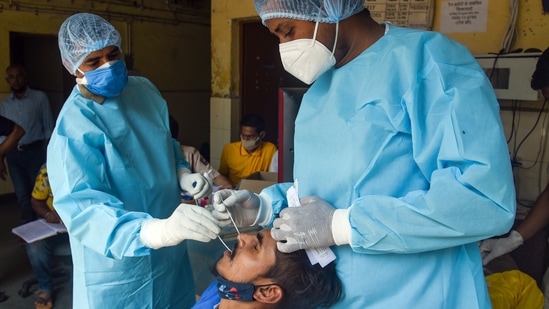Study: Delta variant more transmissible than others
The researchers found a ‘clear competitive advantage’ for Delta variant as compared to the Alpha, Beta and Gamma variants.
The number of secondary infections caused by a person infected by the Delta variant (B.1.617.2) of the Sars-Cov-2 increases by 97% as opposed to the virus seen first in Wuhan, a study in the United Kingdom has found. It has concluded that this variant seen first in India is far more transmissible than any other variant.

The study, published in the European journal for infectious diseases, Eurosurveillance, assessed the data uploaded by 64 countries to the global Sars-CoV-2 genome sequencing database GISAID. It found that the effective reproductive number increased by 29% for the Alpha variant (B.1.1.7) first reported from the UK, 25% for the Beta variant (B.1.351) reported from South Africa, and 38% for the Gamma (P.1) variant reported first from Brazil.
Of the six variants of interest, the researchers found two to show statistically significant increases in the effective reproductive number – the Kappa variant (B.1.617.1) by 48% and Eta variant (B.1.525) by 29%.
But what does a 97% increase mean? “It means if the previous virus was transmitting from one person to two, the Delta variant would transmit to four people,” said Dr T Jacob John, former head of the department of virology at Christian Medical College-Vellore.
He added that the effective reproductive number is based on two factors – the R0 (R-nought) or a fixed reproductive number for each virus, and population immunity. “I don’t quite understand how they calculated effective reproduction number independent of population immunity, but what they have shown is a collective upward trend of the variants across the 64 countries,” John said.
The researchers found a “clear competitive advantage” of the Delta variant as compared to the Alpha, Beta and Gamma variants. The effective reproduction number of the Delta variant increased by 55% as compared to Alpha, 60% in comparison with Beta, and 34% in comparison with the Gamma variant.
This was consistent with the finding of a 42% increase in the secondary attack rate (the probability of an infection occurring in a specified unit, such as household or among close contacts) of the Delta variant as per epidemiological investigations in the UK.
Physicians from India have also repeatedly pointed out that the secondary attack rate was much higher during the second wave of the pandemic in April-May when almost all members of a household got the infection if one person was infected -- something that did not happen previously.
The researchers have said that to control the pandemic, given the rapid spread of the Delta variant in many countries, stricter curbs will have to be imposed and for longer periods. The spread will also stretch the healthcare systems, as was seen in India during the height of the second wave where people struggled to find beds in hospitals.
Dr Anurag Agarwal, director, Institute of Genomics and Integrative Biology, said the study is consistent with “what has already happened”. “A huge, fast second wave. This is the same as what we said in our pre-print study: that the Delta variant is up to 50% more [transmissible] than the Alpha variant, and the Alpha variant is more [transmissible] than the non-variants,” he said.
The number of infections is much lower in India right now, but the Centre has asked the states and Union territories not to let their guard down.
The UK researchers have said that higher transmissibility also means that the threshold for herd immunity will go up, leading to an increase in vaccination coverage targets.
Dr John said population immunity in India is already significantly high after the huge second wave of infections in April-May. “I estimate that the population-level immunity is already at 80% in India. Now, vaccination should be targeted towards people with comorbidities and pregnant women to prevent deaths. Vaccination in children must also be introduced so that schools can re-open safely,” he said.
However, the researchers have left a warning note. “The convergent evolution of mutations thought to be associated with higher transmissibility or immune escape highlights the fact that variants will probably continue to emerge under selective pressures. The emergence of new variants threatens the effectiveness of vaccines and require constant evaluation of available diagnostic, therapeutic, and vaccination strategies as the Covid-19 pandemic continues,” the study concludes.






